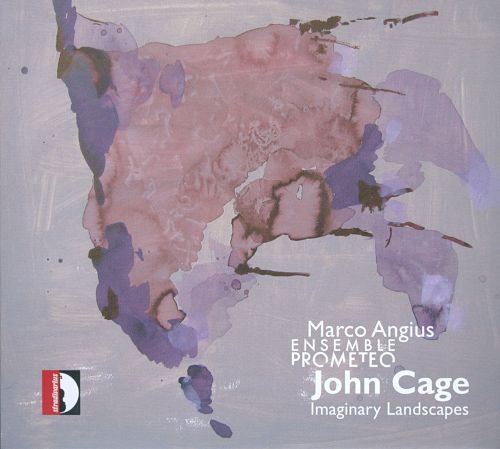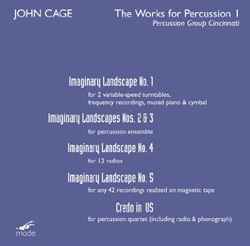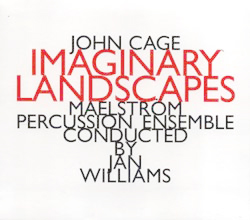| ← Back to Works Index | |||
|
Work Title Imaginary Landscape No. 4 (March No. 2) |
|||
|
Date Composed in 1951. Premiered in New York, May 10, 1951. |
|
Ensemble Type Large Ensemble |
|
Work Length 4 minutes |
|
Instrumentation For twelve radios (twenty-four players and conductor). |
|
Comments For this work, 2 performers are stationed at each radio, one dialing the radio-stations, the other controlling amplitude and timbre. Durations are written in conventional notation, relating to notes placed on a 5-line staff. The rhythmic structure of the work is 2-1-3, and is expressed in changing tempi. Cage uses proportional notation where 1/2” equals a quarter note. However, the notation is not entirely proportional, since accelerandos and ritardandos are still present in the score. The score provides indications for tuning (controlled by player 1), as well as for volume and tone color (controlled by the player 2). When listening to this work, one can’t predict what will be heard, which is exactly what Cage had in mind. In addition, the composition also functioned as a kind of exercise in abandoning preferences (Cage wasn't very fond of radios). As he put it in For the Birds: "I had a goal, that of erasing all will and the very idea of success." His method of composing here is basically the same as used in Music of Changes. Cage employed the I Ching to create charts, which were used to refer to superimpositions, tempi, durations, sounds, and dynamics. In these sound charts, 32 out of 64 fields are silences. In the charts for dynamics, only 16 produce changes, while the others maintain the previous situation. Similar charts were produced and employed for the other parameters. Cage gives an extensive description of his composing means for this work in his “To Describe the Process of Composition Used in Music of Changes and Imaginary Landscape No. 4” (Silence, pp. 57-60). |
|
Publication Peters Edition EP 6718 (score), EP 6718a (parts) |




